Treatment of Fibroids
What are Fibroids?
The uterus is made of a smooth muscle that allows it to expand many times its normal size during pregnancy.
This same muscle can sometimes grow in discrete balls within the uterus, these balls are known as fibroids or myomas. Fibroids are very common and can be found in 30% to 50% of all women.
How do they affect me?
Depending on their location within the uterus, fibroids can have different impacts on each woman:
- When found on the outside of the uterus they may cause pressure on the bladder or bowel causing more frequent passage of urine, a bloating feeling or abdominal swelling.
- When found on the inside of the uterus (the endometrial cavity) they often cause heavy menstrual bleeding.
- When found within the wall of the uterus they may also have an impact on the heaviness of a menstrual period.
In general, other symptoms caused by fibroids can include:
- Reduced fertility
- Severe abdominal pain, especially if the blood supply to a fibroid is compromised.
How do I know if have them?
There is a genetic predisposition of fibroids in certain ethnic groups such as African women and when coupled with your family medical history, will alert your gynaecologist to the possibility of fibroids. Usually a pelvic examination and ultrasound will confirm these findings. MRI is sometimes useful as a preoperative tool.
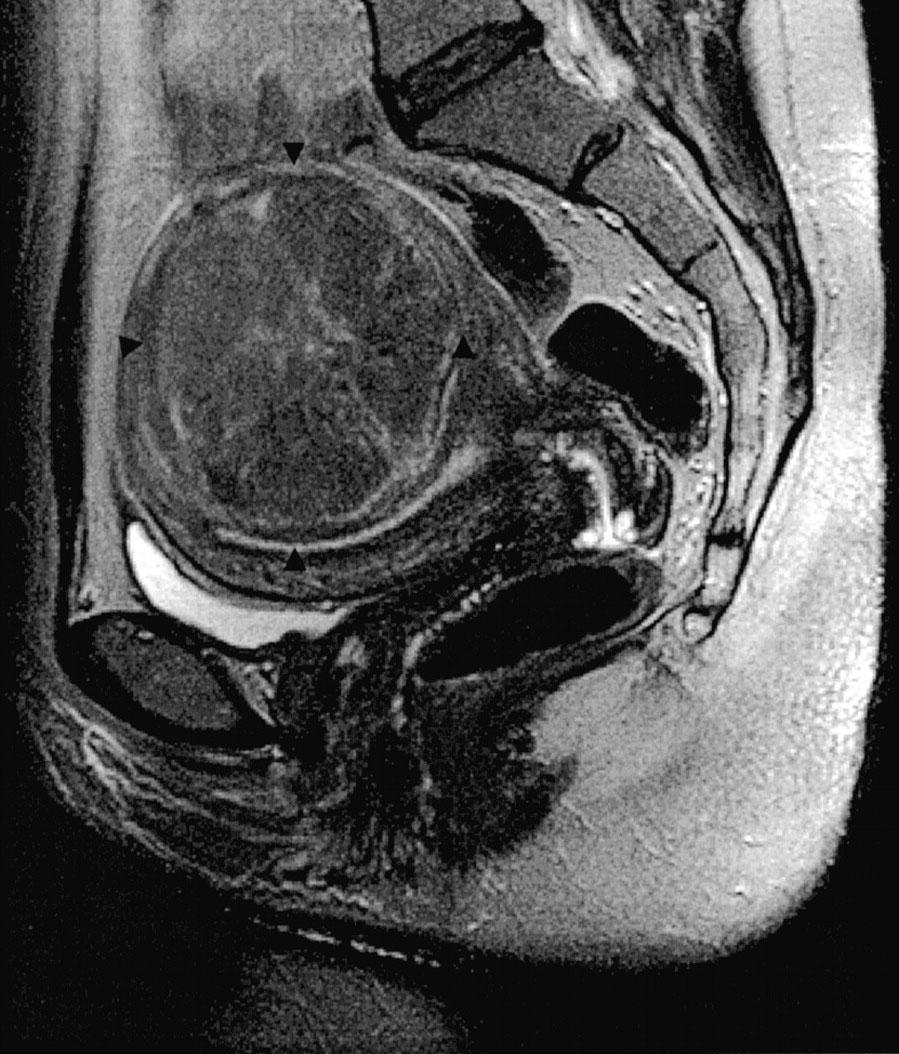 8 cm intramural fibroid. MRI
8 cm intramural fibroid. MRI
What do I do about them?
Managing fibroids depends on your individual situation and the particular symptoms you may be experiencing. For some women heavy bleeding can be simply controlled by hormonal methods such as the contraceptive pill or an intra uterine device such as Mirena*. This however is unsuitable for women hoping to fall pregnant.
Removing the fibroids surgically is usually the best plan of action for women hoping to fall pregnant, experiencing issues with infertility and miscarriages and for cases relating to increased pressure on the bladder causing frequent passing of urine.
How can they be removed?
The removal of fibroids depends on where they are located within the abdomen.
Fibroids found
inside the cavity of the uterus can be removed by a technique called hysteroscopic resection. Here we place a small camera through the cervix to find the fibroid. Once it has been located a small electrical current is used to cut the fibroid tissue out from the uterine wall. We also use a small morcellator called the MyoSure*. This is usually a routine day-surgery procedure.
Fibroids found
on the outside of the uterus can also be removed surgically using a similar method. In the past hysteroscopic resections were not available and this procedure required a large cut across the lower abdomen allowing access to the uterus and then removal of the fibroids (laparotomy). This not only caused scarring and adhesions but were also quite a painful procedure that required a long recovery period. A/Prof Reyftmann is able to remove fibroids up to 12 cm using the
less invasive keyhole techniques. He uses anti adhesive barriers after the removal of the fibroid to decrease the occurrence of post-operative adhesions.
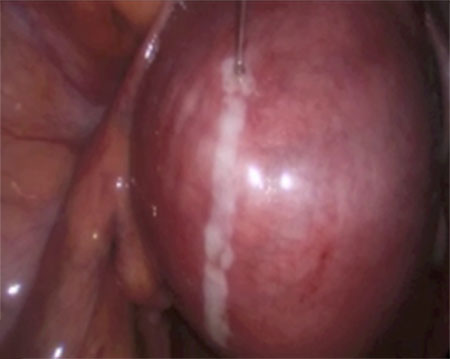 6 cm intramural posterior fibroid. Sagittal incision
6 cm intramural posterior fibroid. Sagittal incision
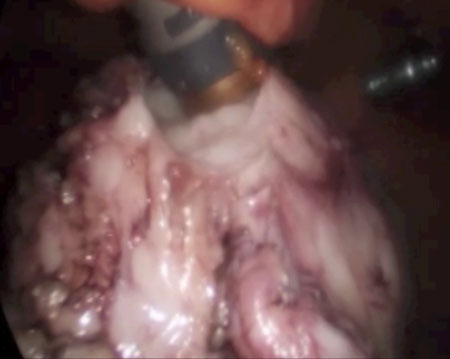 Extraction of the fibroid through a 15 mm incision. Electric morcellator visible.
Extraction of the fibroid through a 15 mm incision. Electric morcellator visible.
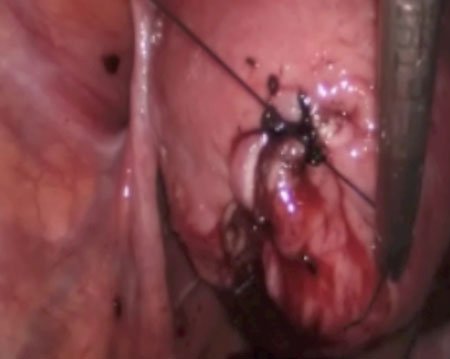 Intracorporeal suture of the uterus.
Intracorporeal suture of the uterus.
Are there any other options?
Some patients may be suitable for fibroid embolization using advanced radiological techniques to block the blood supply to the fibroid. Others, who have completed their family, may find a
laparoscopic hysterectomy (keyhole operation) more suitable. These options can all be discussed at your consultation.
What do I do now?
A/Prof Reyftmann is one of the few practitioners offering laparoscopic treatment of fibroids in the Illawarra,
and is very experienced. He would be happy to provide further information if desired. If you think these issues relate to you and you wish to organise a personal consultation please call
(02) 4227 6589 to make an appointment.
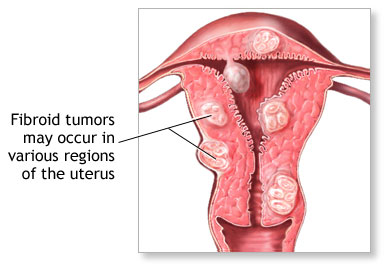


 Extraction of the fibroid through a 15 mm incision. Electric morcellator visible.
Extraction of the fibroid through a 15 mm incision. Electric morcellator visible.
